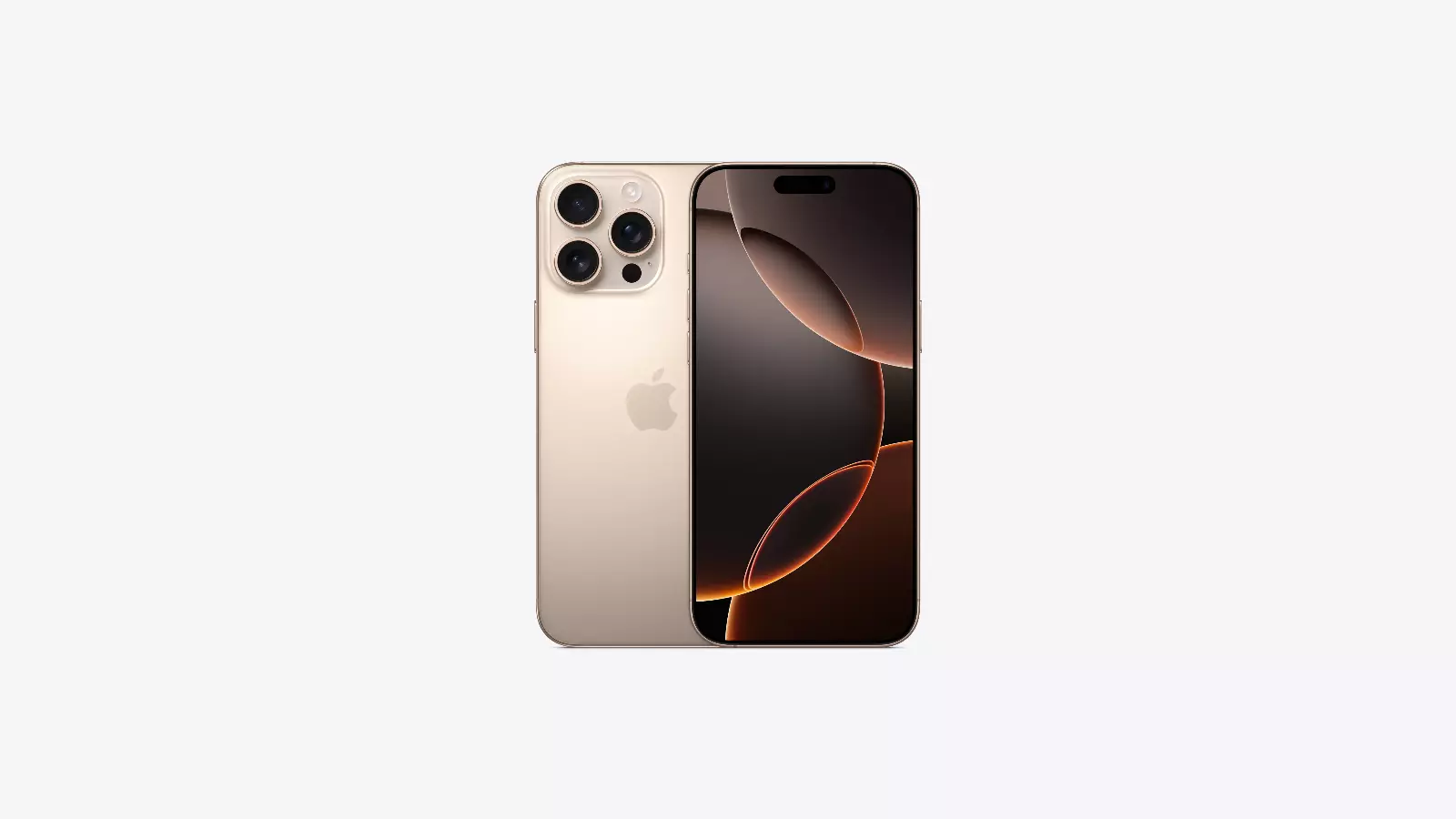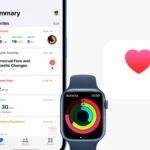Apple’s iPhone 17 lineup is shaping up to be one of the most significant updates in years. After half a decade of iterative tweaks, 2025 marks the company’s boldest redesign since the iPhone X. Leaks and insider reports point to sweeping changes across the board—ranging from a dramatic overhaul in aesthetics to groundbreaking hardware upgrades. And perhaps most exciting of all? The rumored arrival of a new ultra-thin model called the iPhone 17 Air, aimed squarely at users who value style without sacrificing power.
Full iPhone 17 Lineup
According to multiple insiders, Apple’s iPhone 17 family will include the following models:
- iPhone 17 (standard)
- iPhone 17 Pro
- iPhone 17 Ultra (possibly replacing the Pro Max)
- iPhone 17 Air (an all-new ultra-thin flagship)
- iPhone 17 Plus (possibly on the chopping block)
Notably, the iPhone 17 Air is expected to debut as Apple’s thinnest iPhone ever—potentially even thinner than the iPhone 6. If that holds true, Apple could be setting a new bar for minimalist smartphone design.
Radical Redesign & Materials
Design changes are front and center this year. Leaks suggest the iPhone 17 Pro and Ultra will ditch the square camera bump in favor of a rectangular horizontal camera bar with curved corners. It’s a dramatic shift that could align Apple more closely with Android rivals like Google’s Pixel line.
- iPhone 17 Pro/Ultra: Hybrid aluminum-glass chassis for added durability, with slightly thicker dimensions to accommodate larger batteries and improved thermal management.
- iPhone 17 Air: A featherlight model with a sleek aluminum body, thinner than anything Apple’s released before. To reduce bulk, Apple may remove the ultrawide lens—a first since 2019—while using a high-density battery to maintain longevity.
Performance: A19 Chips and Vapor Cooling
Every model in the iPhone 17 lineup is expected to run on Apple’s next-gen A19 chip, with the A19 Pro reserved for the higher-end Pro and Ultra models.
Key performance upgrades include:
- Up to 12GB of RAM in Pro models (up from 8GB in iPhone 15/16)
- Vapor chamber cooling in Pro models to better manage thermal performance during gaming or AI tasks
- Enhanced machine learning capabilities and improved energy efficiency
Camera Upgrades: All 48MP Sensors + Front Camera Boost
Apple seems to be going all-in on photography this year:
- Triple 48MP sensors on the Pro and Ultra: Wide, Ultra Wide, and Telephoto all receive equal treatment.
- 3.5x optical zoom for sharper portrait shots and better low-light zoom.
- Support for 8K video recording and simultaneous front/rear recording, aimed at content creators.
- Across all models, a new 24MP front camera is expected to vastly improve FaceTime and selfies.
The horizontal camera bar isn’t just a cosmetic change—it’s being paired with serious sensor upgrades that could leapfrog the iPhone ahead of Samsung’s and Google’s best camera phones.
Battery & Charging: Faster Speeds, Reverse Wireless, Bigger Capacity
- Larger batteries across Pro and Ultra models mean better endurance.
- 35W wired charging support (up from the current 27W).
- Potential debut of 7.5W reverse wireless charging, enabling users to charge AirPods or Apple Watch directly from the phone.
Combined with the thinner design of the Air model, it’s clear Apple is optimizing battery technology on multiple fronts—from capacity to efficiency to power-sharing.
Connectivity & Software: Wi-Fi 7 and iOS 19
Apple plans to introduce its first in-house Wi-Fi 7 chip in the iPhone 17 lineup, delivering:
- Faster speeds
- Lower latency
- Improved multi-device performance
This shift could help Apple reduce its dependency on third-party suppliers like Broadcom while tightening ecosystem integration.
On the software side, iOS 19 is rumored to launch alongside the iPhone 17, offering:
- A refreshed VisionOS-inspired interface
- Redesigned icons, smoother animations
- Pro-level features like dual-camera video capture, likely exclusive to A19 Pro-powered models
Pricing and Market Strategy
While official prices remain under wraps, industry analysts expect the following:
| Model | Estimated Price | Key Selling Point |
|---|---|---|
| iPhone 17 | $799 | Core performance, updated design |
| iPhone 17 Pro | $999 | Power users, 48MP camera system |
| iPhone 17 Ultra | $1,199+ | Premium features, larger screen and battery |
| iPhone 17 Air | $899 | Ultra-thin design, premium feel |
| iPhone 17 Plus | TBD (may be cut) | Larger display for standard users |
If the rumors pan out, the iPhone 17 Air could be a breakout hit—providing users with a stylish, ultra-thin iPhone that still packs Apple’s cutting-edge silicon.
Apple hasn’t confirmed any of these leaks yet, but the consistency across multiple sources suggests big changes are coming. With redesigned cameras, thinner builds, AI-powered performance, and a revamped interface on the horizon, the iPhone 17 may very well be Apple’s boldest lineup since the iPhone X shook up the smartphone world. Stay tuned for Apple’s official reveal, likely coming in September 2025.
Key Takeaways
- The iPhone 17 lineup will introduce a new ultra-thin “Air” model with an aluminum chassis that could be thinner than the iPhone 6
- A redesigned camera system featuring a rectangular bar with rounded corners is expected on the Pro models and Air variant
- Apple plans to use its proprietary Wi-Fi chips across the entire iPhone 17 series, launching in fall 2025
Overview of the iPhone 17 Series
Apple’s upcoming iPhone 17 lineup is expected to introduce significant design changes and impressive specs improvements. The series will likely include multiple models with distinctive features, particularly in their camera systems and form factors.
Comparing iPhone 17 to Previous Models
The iPhone 17 series represents a notable evolution compared to the iPhone 16 lineup. According to recent leaks, Apple plans to introduce four models: the standard iPhone 17, iPhone 17 Pro, iPhone 17 Pro Max, and a new iPhone 17 Air (previously rumored as iPhone 17 Slim).
One of the most significant changes appears to be in the camera design. The iPhone 17 Air and Pro models are rumored to feature a new rectangular camera bar with rounded corners that spans across the back of the device. This marks a departure from the square camera bump design seen in recent generations.
Material choices may also differ from previous models. Recent rumors suggest the iPhone 17, 17 Pro, and 17 Pro Max will all feature aluminum frames, a change from the titanium frames introduced with the iPhone 15 Pro series.
The iPhone 17 Pro Max might feature a smaller Dynamic Island, continuing Apple’s efforts to reduce screen interruptions. Additionally, display improvements may include new anti-glare and scratch-resistant glass developed in partnership with Corning.
In terms of thickness, the lineup is expected to be slimmer than previous generations, with the iPhone 17 Air potentially being the thinnest iPhone ever released.
Anticipated Release Date and Availability
Apple is expected to unveil the iPhone 17 lineup in September 2025, following the company’s established annual release pattern. The tech giant has consistently introduced new iPhone models during this month for over a decade, making this timeframe highly probable for the next generation.
The iPhone 17 family will likely include several models. Based on current information, we may see the standard iPhone 17, iPhone 17 Pro, and iPhone 17 Pro Max. Interestingly, rumors suggest the Plus variant might be replaced by a new “iPhone 17 Air” model.
Pre-orders typically open within days after the announcement event. If Apple maintains its traditional schedule, pre-orders could begin on the Friday following the reveal, with retail availability starting one week later.
| iPhone 17 Model | Expected Announcement | Pre-orders | Retail Availability |
|---|---|---|---|
| iPhone 17 | September 2025 | Mid-Sept | Late September 2025 |
| iPhone 17 Pro | September 2025 | Mid-Sept | Late September 2025 |
| iPhone 17 Pro Max | September 2025 | Mid-Sept | Late September 2025 |
| iPhone 17 Air | September 2025 | Mid-Sept | Late September 2025 |
Supply chain reports haven’t indicated any significant production delays. However, the high-end Pro models sometimes face limited initial availability due to manufacturing complexity and high demand.
Global availability will likely follow Apple’s tiered rollout strategy. First-wave countries usually include the US, UK, Canada, Australia, China, and Japan, with additional markets receiving the devices in subsequent weeks.
Design Innovations and Aesthetics
The iPhone 17 lineup appears to be receiving substantial design changes according to recent leaks. These modifications include potential material upgrades, chassis refinements, and a complete rethinking of the camera layout that may distinguish it significantly from previous generations.
Material and Chassis Changes
Apple is reportedly experimenting with different frame materials across the iPhone 17 lineup. According to analyst reports, the iPhone 17, iPhone 17 Pro, and iPhone 17 Pro Max might feature aluminum frames, which would represent a shift for the Pro models that currently use titanium.
This material choice could impact both weight and thermal properties. The base iPhone 17 will likely maintain aluminum, offering continuity with previous generations while potentially receiving structural improvements.
The rumored iPhone 17 Air (or possibly iPhone 17 Slim) stands out with its ultra-thin profile. This model would represent Apple’s thinnest iPhone ever, with a dramatically slimmed-down chassis that may require internal component reorganization to achieve such thinness.
Screen and Display Evolution
Display technology in the iPhone 17 series may incorporate Touch and Display Driver Integration (TDDI), streamlining the screen components for better efficiency and potentially reduced thickness.
The lineup is expected to maintain OLED displays across all models. The standard iPhone 17 may feature a 6.6-inch display, slightly larger than current offerings.
The iPhone 17 Air could showcase Apple’s most advanced display engineering, with specialized components to maintain structural integrity despite its thin profile. This model would need to balance screen size with battery capacity constraints.
Screen protection may continue with Ceramic Shield technology or introduce improvements for enhanced durability. There are also rumors about potential Metalens technology integration for camera systems, which might influence display design.
Design Comparison with iPhone 16 Lineup
The most striking difference between iPhone 16 and 17 may be the camera layout. Leaked CAD renders suggest the iPhone 17 family could adopt a horizontal camera bar design, particularly on Pro models, moving away from the square camera module present since iPhone 11.
The iPhone 17 Air appears to feature a single camera in a pill-shaped housing, similar to the upcoming iPhone 16e. This minimalist approach aligns with its ultra-thin design philosophy.
Overall dimensions may change across the lineup, with all models potentially becoming thinner thanks to improved cooling systems. Vapor chamber technology might be implemented to manage thermal performance in the slimmer chassis.
The standard iPhone 17 models seem to maintain familiar design language while Pro models appear more dramatically redesigned. This distinction could create clearer visual separation between the standard and premium tiers in Apple’s smartphone portfolio.
Hardware and Performance
The iPhone 17 lineup is poised to receive substantial hardware upgrades based on recent rumors. Apple appears to be focusing on RAM improvements, processor advancements, and possibly enhanced battery technologies for its 2025 flagship devices.
The A-Series Chip Evolution
The iPhone 17 series will likely feature the next-generation A19 chip, building upon the architecture established by the A18 family in the iPhone 16 lineup. The standard iPhone 17 models are expected to receive the base A19 chip, while the Pro variants will likely feature an enhanced A19 Pro processor with additional GPU cores and specialized neural processing capabilities.
Industry analysts predict the A19 will be manufactured using TSMC’s advanced 3nm process technology, potentially offering 15-20% better power efficiency compared to previous generations. This would translate to improved performance without compromising battery life.
The new chips may also include dedicated AI processing units to handle on-device machine learning tasks more efficiently. This would enable faster photo processing, enhanced voice recognition, and more responsive augmented reality experiences.
RAM and Internal Memory Options
Multiple sources now confirm that the iPhone 17 Pro and Pro Max will likely receive a significant RAM upgrade to 12GB, up from the current 8GB configuration found in the iPhone 15 Pro models. This represents a 50% increase in memory capacity, which should improve multitasking capabilities and future-proof the devices.
According to analyst Jeff Pu, this transition to LPDDR5 12GB RAM will contribute to a 3.5% year-over-year increase in smartphone DRAM content across an estimated 100 million units. The standard iPhone 17 models may retain 8GB of RAM but could see improvements in memory speed.
Storage options will likely start at 256GB for Pro models, with options extending to 1TB or possibly even 2TB for power users and content creators. The base models may begin at 128GB with options up to 512GB.
Battery and Charging Technologies
Battery improvements are expected across the iPhone 17 lineup, with particular focus on the rumored “iPhone 17 Slim” variant. This model may feature a redesigned battery structure to maintain decent battery life despite its thinner profile.
All iPhone 17 models are rumored to incorporate Apple’s in-house Wi-Fi chips, with leaker Ming-Chi Kuo specifying that “All new 2H25 iPhone 17 models will feature Apple’s in-house Wi-Fi chips.” The iPhone 17 Slim specifically is expected to feature the C1 chip variant, which could offer improved power efficiency for wireless communications.
Charging speeds might finally see an upgrade, potentially supporting 35W or faster wired charging. Wireless charging capabilities could also improve with more efficient coil designs and potentially faster MagSafe charging rates beyond the current 15W limitation.
Camera Systems and Photography
Apple’s iPhone 17 lineup appears poised for significant camera improvements based on recent leaks and rumors. These updates may include redesigned camera arrangements, enhanced specifications, and new photography capabilities across all models.
Front Camera Enhancements
The iPhone 17 Pro models are rumored to feature a substantial upgrade to the front-facing camera. Reports suggest Apple may implement a 24-megapixel front camera, marking a notable improvement over previous generations. This higher resolution would enable sharper selfies and improved video call quality.
The upgraded front camera might also include enhanced low-light performance capabilities. This would address a common pain point for users who take selfies in dimly lit environments.
Apple could integrate more advanced AI-driven features for the front camera, potentially offering improved portrait mode effects and real-time adjustments. These enhancements would support the growing trend of content creation directly from smartphones.
Rear Camera Specifications
Leaks suggest the iPhone 17 Pro models may maintain a 48MP main camera but with significant improvements to the sensor size. A larger sensor would capture more light, resulting in better image quality especially in challenging lighting conditions.
The ultrawide camera might see upgrades in resolution and field of view. This would enhance landscape photography and group shots where capturing more of the scene is beneficial.
One exciting rumor points to a mechanical aperture system, similar to traditional cameras. This would give users more control over depth of field and light intake, potentially bringing DSLR-like capabilities to the iPhone.
AI-powered computational photography features are expected to play a larger role in the camera system. These could include improved night mode, better dynamic range, and more sophisticated image processing algorithms.
Camera Design and Positioning
Recent CAD renders shared by leaker Majin Bu show potentially dramatic changes to the camera arrangement across the iPhone 17 lineup. The standard iPhone 17 models may feature a different camera layout than their Pro counterparts.
The iPhone 17 Air might include a single camera housed within a large, centered bump. This would differentiate it visually from other models while potentially maintaining quality through computational photography.
For the Pro models, rumors conflict on the exact design. Some leaks suggest a rectangular camera strip along the top, departing from the square camera module seen in current iPhones. This horizontal arrangement could improve ergonomics when holding the phone in landscape orientation.
The camera positioning changes may also support improved spatial video recording capabilities, though reports conflict on whether all models will support this feature.
Display Technology and User Interface
The iPhone 17 is rumored to bring significant upgrades to its display technology across all models. These improvements focus on enhanced refresh rates and more sophisticated always-on display capabilities powered by advanced LTPO OLED technology.
Always-On Display Features
The iPhone 17 lineup is expected to expand Always-on Display functionality to all models. This feature, previously limited to Pro models, uses LTPO OLED technology to maintain visible information while consuming minimal power. The system intelligently dims the wallpaper while keeping time, widgets, and notifications visible.
Apple may introduce more customization options for the Always-on Display in the iPhone 17. Users could potentially select which elements remain visible and adjust brightness levels based on environmental conditions. The technology might also incorporate more contextual awareness, displaying different information based on user location or time of day.
Battery optimization remains a priority, with Apple reportedly fine-tuning the power management systems to minimize the impact of the Always-on Display on battery life.
ProMotion Display Advancements
All iPhone 17 models will likely feature 120Hz ProMotion displays, according to recent rumors. This would mark a significant upgrade for the standard models, which currently operate at 60Hz. The higher refresh rate delivers noticeably smoother scrolling, animations, and overall responsiveness.
The ProMotion technology uses Low-Temperature Polycrystalline Oxide (LTPO) displays to dynamically adjust refresh rates between 1Hz and 120Hz depending on screen content. This adaptive approach saves battery life while maintaining fluid visuals when needed.
Apple may introduce improved touch response rates alongside the enhanced refresh rates. The upgraded displays could also feature better brightness levels, potentially reaching peaks of 2,000 nits or higher for improved outdoor visibility.
Color accuracy is another area of potential improvement, with the displays possibly supporting wider color gamuts and better HDR performance for more vivid and realistic content viewing.
Connectivity and Network Capabilities
The iPhone 17 lineup is expected to bring significant changes to Apple’s connectivity features. Recent reports indicate all four iPhone 17 models will feature Apple’s own in-house designed Wi-Fi 7 chip, marking a notable advancement in wireless connectivity.
Apple’s transition to Wi-Fi 7 technology will likely deliver faster speeds, improved reliability, and lower latency for users. This represents Apple’s continued push toward developing more of its own components rather than relying on third-party suppliers.
However, not all connectivity components in the iPhone 17 will be Apple-designed. According to recent reports, the standard iPhone 17 models may not include Apple’s new C1 modem. Only the premium iPhone 17 Air is rumored to feature this custom-designed modem chip.
For the main iPhone 17 models, Apple might opt for MediaTek modems instead. This suggests a tiered approach to Apple’s connectivity strategy, with premium features reserved for higher-end devices.
The C1 modem represents Apple’s first attempt at creating its own cellular modem after years of using Qualcomm components. This shift aligns with Apple’s broader strategy of controlling more of its hardware stack.
5G capabilities will certainly continue in the iPhone 17 lineup, though specifics about potential improvements remain limited. Apple typically enhances network performance with each generation, so users can expect some optimization.
Regarding the physical SIM tray, there has been no specific information in recent leaks. Apple has been gradually transitioning to eSIM technology in various markets, but whether the iPhone 17 will continue this trend globally remains to be seen.
Software Integration and Ecosystem
The iPhone 17 lineup is expected to showcase significant advancements in software capabilities and ecosystem connections. Apple’s focus on deep integration across its product range will likely reach new heights with iOS 19 and expanded Apple Intelligence features.
iOS Updates and Compatibility
iOS 19 will serve as the foundation for the iPhone 17 experience, bringing enhanced personalization options and improved connectivity within the Apple ecosystem. Based on current leaks, the software will introduce new customization features that allow users to tailor their experience more precisely than ever before.
Apple Intelligence, the company’s AI initiative, is expected to receive substantial upgrades with the iPhone 17 series. These improvements may include more sophisticated on-device processing capabilities and expanded functionality across applications.
The new operating system will likely support older iPhone models, though some advanced features may be exclusive to devices with Apple’s latest in-house chips. This approach follows Apple’s traditional pattern of providing basic compatibility while reserving cutting-edge capabilities for newer hardware.
Cross-Device Synergy with Apple Products
The iPhone 17 is rumored to feature enhanced integration with other Apple devices, particularly the iPad Pro and Mac lineup. Seamless content sharing and workflow continuity will be further refined, allowing users to start tasks on one device and finish them on another without interruption.
Apple’s commitment to ecosystem cohesion appears stronger than ever with rumors pointing to new cross-device features. These may include:
- Expanded AirDrop capabilities with higher transfer speeds
- Enhanced Handoff functionality for more application types
- Improved Universal Control for managing multiple devices simultaneously
The new iPhone models will reportedly work with Apple’s next-generation accessories, potentially including updated AirPods and Apple Watch models. This integration may extend to the Vision Pro as well, with specialized features that leverage the computational power of the iPhone 17’s new chips.
Data synchronization across the ecosystem is expected to become more efficient with iOS 19, reducing lag times and improving the overall user experience when moving between Apple devices.
Pricing and Market Positioning
The iPhone 17 lineup is expected to maintain Apple’s premium pricing strategy while introducing new positioning options. According to recent rumors, the base iPhone 17 model will likely start around $1,099, with the Pro variant coming in at approximately $1,299.
For those seeking the ultimate flagship experience, the iPhone 17 Pro Max may command a price of $1,499 or possibly higher. This tiered pricing structure reflects Apple’s strategy of offering different feature sets at various price points.
Perhaps the most interesting development is the rumored iPhone 17 Air. This ultra-thin device (reportedly just 6.25mm thick) is expected to be positioned in the mid-range of the lineup, with pricing between $899 and $999.
Korean publication Sisa Journal reported in January 2025 that the iPhone 17 Air might cost in the same range as the current iPhone 16 Plus, which starts at $899. This would place it as a premium option for consumers who value design and portability over the advanced features of the Pro models.
Apple’s strategic market positioning appears to be creating distinct value propositions for each model:
- iPhone 17: Standard flagship features
- iPhone 17 Air: Ultra-thin design with mid-tier pricing
- iPhone 17 Pro: Advanced features for professionals
- iPhone 17 Pro Max: Ultimate premium experience
This approach allows Apple to appeal to different consumer segments while maintaining its premium brand identity across all price points.
Frequently Asked Questions
The iPhone 17 series is generating significant interest with rumored features like larger displays, advanced processors, and potential new models. Apple appears to be planning substantial changes for their 2025 flagship devices.
What are the expected features of the iPhone 17 Pro Max?
The iPhone 17 Pro Max is rumored to feature a larger 6.86-inch LTPO display, offering enhanced visual experience. This would be a notable increase from current screen sizes.
Apple may equip this premium model with the A19 Pro chip and 12GB of RAM, potentially delivering substantial performance improvements over previous generations.
The Pro Max variant might also include a smaller Dynamic Island, making more screen space available for content while maintaining the functionality introduced in earlier models.
When is the anticipated release date for the iPhone 17 series?
The iPhone 17 lineup is expected to launch in September 2025, following Apple’s traditional annual release schedule for flagship iPhones.
This timeframe aligns with Apple’s pattern of introducing new iPhone models in the fall, typically during a special event.
Are there any official announcements regarding iPhone 17 Air?
There have been no official announcements from Apple regarding an iPhone 17 Air model, but rumors suggest it’s in development.
This potential new model is reportedly being designed as an ultra-thin device, possibly measuring between 5-6mm in thickness.
The “iPhone 17 Air” naming remains tentative, as Apple has not confirmed the existence of this model or its branding.
Will there be significant design changes in the iPhone 17 compared to its predecessors?
The iPhone 17 series may feature significant design changes, including larger display sizes across the lineup and potentially thinner profiles.
Apple is reportedly working with Corning on new anti-glare and scratch-resistant glass technology, which could improve durability and visual clarity.
A high-ranking Apple executive has described the 2025 iPhone launch as the company’s “most ambitious” to date, suggesting substantial innovations.
What can consumers expect from the camera technology of the upcoming iPhone 17?
Specific camera details for the iPhone 17 series remain limited at this early stage, but Apple typically improves camera systems with each generation.
Based on Apple’s development patterns, consumers might expect enhancements in computational photography, low-light performance, and possibly new sensor technology.
Apple may also introduce new AI-powered photography features, continuing the trend of using software to enhance imaging capabilities.
Has Apple provided any information about the potential price range for the new iPhone 17 models?
Apple has not released any official information about pricing for the iPhone 17 lineup.
Pricing details typically remain confidential until the official announcement event, usually held in September.
If Apple introduces a new “Air” model to the lineup, it may result in a revised pricing structure across the entire iPhone 17 range.







